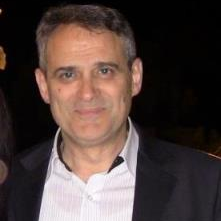Future Optical Waveguides
A special issue of Applied Sciences (ISSN 2076-3417). This special issue belongs to the section "Optics and Lasers".
Deadline for manuscript submissions: closed (15 March 2020) | Viewed by 2664
Special Issue Editors
Interests: forecasting earthquake; prediction earthquake; trading market techniques; optical wireless communications; AI; machine learning; deep learning and applications; optical communication; network protocol performance; sensors; communications; interfaces
Special Issues, Collections and Topics in MDPI journals
Interests: optical fibers telecommunications; optical wireless; sensors
Special Issues, Collections and Topics in MDPI journals
Special Issue Information
Dear Colleagues,
The theory of optical fibers was first dealt with by Hondros and Debye in 1910, and within 110 years, the concept has been implemented and the technology of optical fibers has matured to such an extent as to support today’s internet revolution. The optical fiber waveguide theory has also been realized with superb technologies into state-of-the-art optical fibers and, more recently, into new forms of waveguide ideas which are currently being researched. Furthermore, there have been great strides in developing new design algorithms to model the new waveguide ideas. Clearly, it is not only an area of interest in telecommunications, but also in devices and sensors, and this has opened up possibilities in other optical wavelengths for special applications from lasers to devices. This Special Issue aims to cover the state of the art in algorithmic techniques and solutions to waveguides, including emphasis of new structures and new concepts of waveguides.
Prof. Dr. Anthony C. Boucouvalas
Prof. Min Zhang
Guest Editors
Manuscript Submission Information
Manuscripts should be submitted online at www.mdpi.com by registering and logging in to this website. Once you are registered, click here to go to the submission form. Manuscripts can be submitted until the deadline. All submissions that pass pre-check are peer-reviewed. Accepted papers will be published continuously in the journal (as soon as accepted) and will be listed together on the special issue website. Research articles, review articles as well as short communications are invited. For planned papers, a title and short abstract (about 100 words) can be sent to the Editorial Office for announcement on this website.
Submitted manuscripts should not have been published previously, nor be under consideration for publication elsewhere (except conference proceedings papers). All manuscripts are thoroughly refereed through a single-blind peer-review process. A guide for authors and other relevant information for submission of manuscripts is available on the Instructions for Authors page. Applied Sciences is an international peer-reviewed open access semimonthly journal published by MDPI.
Please visit the Instructions for Authors page before submitting a manuscript. The Article Processing Charge (APC) for publication in this open access journal is 2400 CHF (Swiss Francs). Submitted papers should be well formatted and use good English. Authors may use MDPI's English editing service prior to publication or during author revisions.
Keywords
- Waveguide theory techniques
- Inverse design of waveguides
- Integrated optic waveguides
- Photonic crystal structures
- Metamaterials and photonic band gap
- Dispersion compensation
- Nonlinear effects
- Waveguide theory applied to devices
- Neural networks and artificial intelligence designs
- High power delivery using waveguides
- Particle acceleration waveguide techniques






